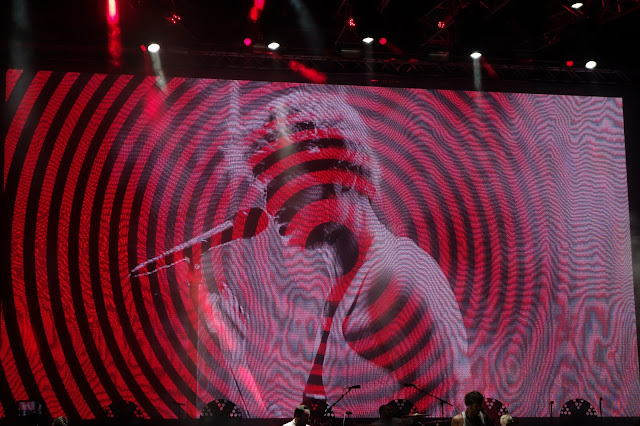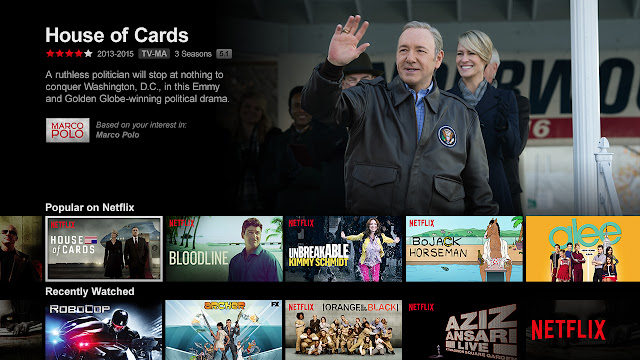I won't ever profess to having a particularly brilliant understanding of science. I can't even programme my cooker. But if I've grasped one thing from no less a scientific figure than Albert Einstein, it's that time is relative (as opposed to time is a relative, which would make it, like, an aunt, or a nephew, or a third cousin twice removed. Ho and, can I add, ho).
Einstein's theory may go some way to explain how Live Aid - which took place 30 years ago today - might be closer in years to Woodstock, 16 years beforehand, but even now somehow still seems much more recent.
Perhaps it's just the contrasting photography: the event at Max Yasgur's Catskills farm in August 1969 seems framed exclusively by black and white pictures of unclothed hippies of (almost) indeterminable gender wiggling about to Jimi Hendrix or Richie Havens. Live Aid, on the other hand, leaps from the memory as a blaze of gaudy, mid-80s colour - from Sade's crimson lipstick to the abomination that was Mick Jagger's pistachio silk shirt in that Dancing In The Street video with The Dame, more or less everything being worn on the day by Spandau Ballet and Duran Duran, George Michael’s vibrant yellow shirt in the Wembley finale, and Madonna's paisley-and-lace outfit.
Comparing Woodstock and Live Aid is like comparing the two world wars, which had a similar gap between them and yet marked the difference between the Sopwith Camel and the jet engine. And just as those conflicts bore many commonalities, so there were common artists to the two music events - Santana, Joan Baez, Crosby, Stills, Nash & Young and even The Who, who've only just headlined the closing night of this year's Glastonbury. CS&Y and Neil Young are still touring and recording (David Crosby today looks little different to how he looked on stage at Max Yasgur's Catskills farm, though there may be mitigating reasons for that...), and Paul McCartney, who led the Wembley finale of Live Aid, is still out on the road. As I said, time really is relative.
To the 17-year-old me, Live Aid was an impressional, day-long televised version of Smash Hits, the ultimate summer special postermag - 16 hours of live music from more than 60 individual artists.
And all I wanted afterwards was to get a pair of Bass Weejun loafers like Paul Weller had worn sockless, and to look as annoyingly cool as Sting had done in his baggy white grandad shirt (I still have designs on owning an all-black '79 Fender Stratocaster with a maple neck like that on which he played Roxanne and Driven to Tears that day).
In fact, now I think of it, the Wembley Live Aid concert definitely had the edge over it's Philadelphia counterpart in terms of sartorial excellence. No one at the US show came close to Bryan Ferry, immaculate as ever in white buttoned-up shirt with the cuffs undone, and, of course, Bowie, in a blue-grey suit and floral tie, with a quiff that I later tried to replicate without success.
There was an unwitting rivalry between Wembley and Philadelphia on the day, mainly dictated to by touring schedules. Thus, Wembley was a predominantly British affair: Status Quo, the Style Council, the Boomtown Rats, Adam Ant, Ultravox, Spandau Ballet, Elvis Costello, Nik Kershaw, Sade, Sting, Phil Collins, Howard Jones, Bryan Ferry, Paul Young and Alison Moyet, U2, Dire Straits, Queen, David Bowie, The Who, Elton John and Wham, Paul McCartney. Philadelphia was dominated by US artists, but a few British stragglers like Simple Minds, Duran Duran and Eric Clapton, who were on tour at the time, plus Phil Collins, who'd famously taken Concorde across the Atlantic after his Wembley set to do it all over again ("I was in England this afternoon. Funny old world, innit?").
Collins was also involved in one of the day's few disappointments: five years after the death of John Bonham, Robert Plant, Jimmy Page and John Paul Jones agreed to reform Led Zeppelin for the day, bringing in both Chic/Power Station drummer Tony Thompson and Collins. Unrehearsed and unprepared, according to Collins, "Robert was happy to see me, but Jimmy wasn't". And so, performances of Rock And Roll, Whole Lotta Love and Stairway To Heaven were less than stellar. "If I could have walked off, I would have done," Collins told Q magazine last year. "But then we'd all be talking about why Phil Collins walked off Live Aid - so I just stuck it out. It was a disaster, really. Robert wasn't match-fit with his voice and Jimmy was out of it, dribbling. It wasn't my fault it was crap."
Still, even if the semi-planned reunion of the greatest heavy rock band in history was something of a car crash, it was never going to overshadow the almost impossible-to-contemplate magnitude of the line-up, and the legacy it left behind.
Live Aid was never the first charity concert - George Harrison's Concert For Bangladesh and Amnesty International's Secret Policeman's Ball shows arguably set that blueprint - but the enormity of all, with 72,000 at Wembley, 100,000 at the JFK stadium in Philadelphia, and anything up to two billion people across the world watching on TV set this apart as an event that went way beyond simply a cultural landmark.
According to Bob Geldof, it had been Boy George's idea. After the Band Aid recording the previous November, George had more or less suggested that, since all of those artists had come together to record a single record, why not get them all together to do a show. That, though, clearly snowballed.
Fuelled by Geldof's belligerent hectoring of artists to perform, and the concert know-how of promoters Harvey Goldsmith and Bill Graham, the 'show' turned into a logistical challenge on a scale never attempted before, and never quite the same since, although Farm Aid, the Prince's Trust gigs and even Live8 have stepped valiantly in Live Aid's footsteps.
With the Vietnam War as a backdrop, Woodstock brought about the beginning of the end of the 1960s rock and pop revolution with the far-out idealism of its time. Live Aid could be viewed similarly, but unlike the peace-and-love movement, it did at least achieve something meaningful. Live Aid raised more than $200 million was raised for Africa on the day, which can be sniffed at cynically (and has also been questioned legally), but not ignored.
Geldof's famous "give us your money - NOW!!" expletive-ridden outburst on live TV that Saturday afternoon is said to have increased the cash being pledged by £300 per second.
The collective conscience was pricked again during David Bowie's set (which had featured a defining performance of Heroes), when he gave up one of the songs in his allotted 20 minutes to play a genuinely moving video of sick and starving children in Ethiopia, set to The Cars' Drive.
It is, of course, very easy to accuse the stars who performed at Live Aid of arch piety - especially given the riches Live Aid brought to bands like Queen through exposure (though brilliantly compiled) to their back catalogues. And there is still something not quite right about coked-out rock stars chorusing about "snow in Africa"...
But no one should deny the intention of Live Aid, nor its standout moments: the opening notes of the Coldstream Guards' fanfare as Charles and Diana entered the Royal Box at Wembley; Richard Skinner's “It’s 12 noon in London, 7am in Philadelphia - and around the world it’s time for Live Aid!" announcement before Status Quo brilliantly kicked off the day with Rockin' All Over The World; Geldof's contractually-obligated performance, with The Boomtown Rats, of I Don't Like Mondays - with his wonderfully OTT pregnant pause after "...and the lesson today is how to die!"; Jack Nicholson in the US introducing U2 in London via satellite, who then went on to challenge Queen for the day's best set; the 18-year-old busker from Miami, Bernard Watson, who persuaded Bill Graham, producer of the Philadelphia show, to let him open the US event, right through to the Philadelphia finale of We Are The World, orchestrated by Lionel Richie, himself only just fresh from a 'living legend' appearance at Glasto.
Live Aid achieved the seemingly impossible. The Who weren't supposed to be on speaking terms in 1985, and yet Geldof had somehow convinced them otherwise; Led Zepp had said no more after Bonzo's death, but there they were, sort of; others chartered jets and rearranged tours to be in London or Philadelphia. There were, though, some notable absentees: the surviving Beatles (despite McCartney's appearance in London) didn't reform, Michael Jackson was absent and Prince appeared only in a video. Bruce Springsteen is said to have underestimated the enormity of the show and turned down an appearance, which he now regrets, while even Culture Club, then one of the world's biggest pop groups and whose lead singer had even been the first to suggest such a show, didn't play.
Woodstock might have captured the times, but Live Aid went beyond. Its altruism not withstanding - and more than 60 of the biggest music stars of 1985 playing for free to help the starving in Africa - it has to be regarded now, in complete terms, as the greatest event in the history of rock and pop. Could it ever be staged again? I doubt it.
Even if the McCartneys, The Whos and the Rolling Stones of this world are still going in their sixth decades as performers, bridging the Woodstock, Live Aid and current eras in the process, music has changed out of all proportion over the last 30 years. And it's not, either, about the Internet age versus the pre-Internet age.
Live Aid was the greatest rock and roll show ever. It could never be repeated and never beaten. For all its 1980s vibrancy, it drew heavily on the generation that attended Woodstock or were turned on to music by Woodstock, or even went out of their way to react against Woodstock.
As Live8 did, ten years ago, you could put together the ultimate charity concert with all the same trimmings, and even some of the same artists, but - and this may be a generational thing - it just wouldn't be the same.
Geldof called it "the global jukebox", a remarkable day in history, that seemed perfect for its time. Time, of course, being relative.






























